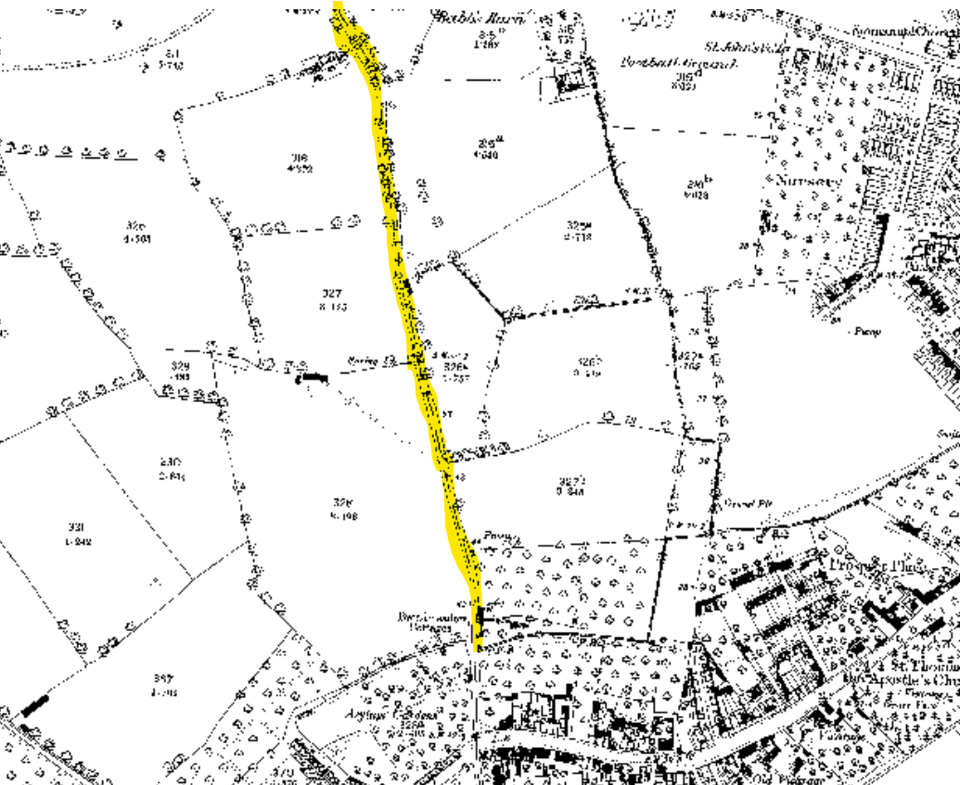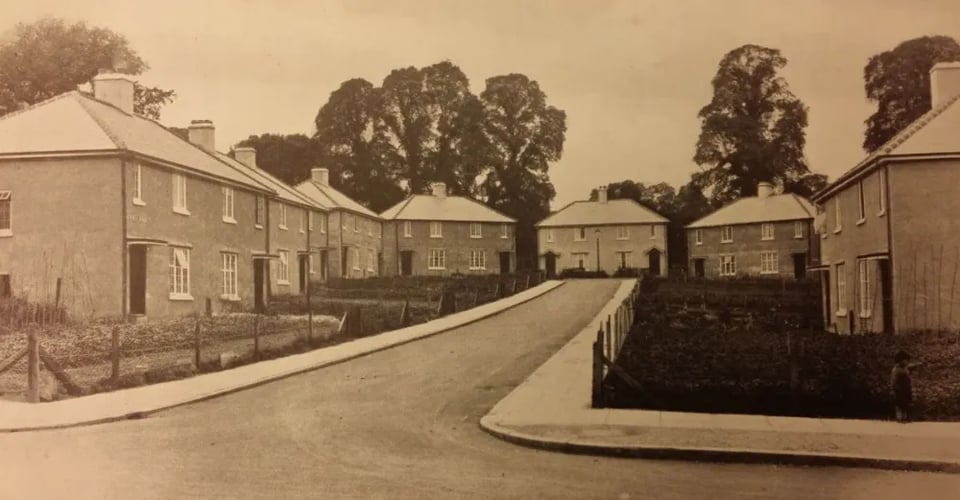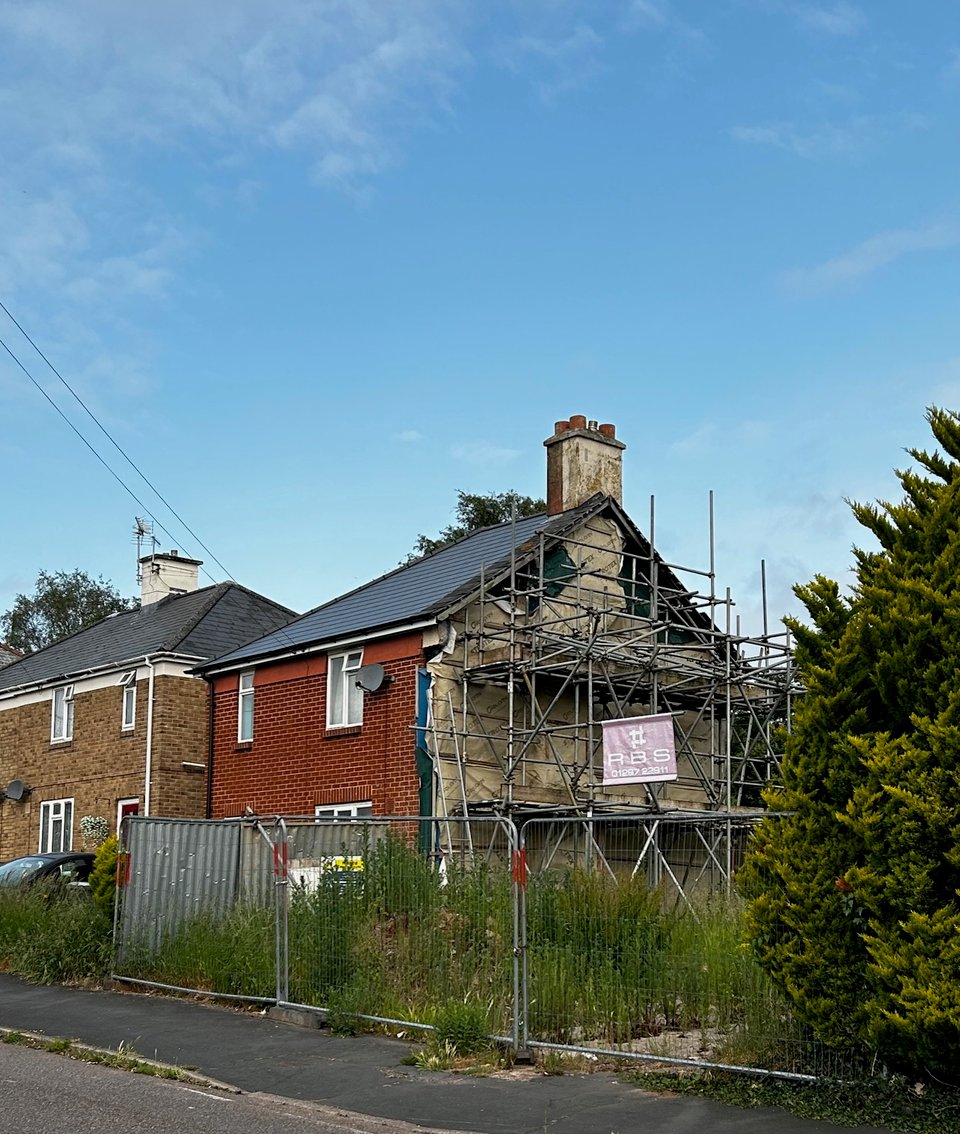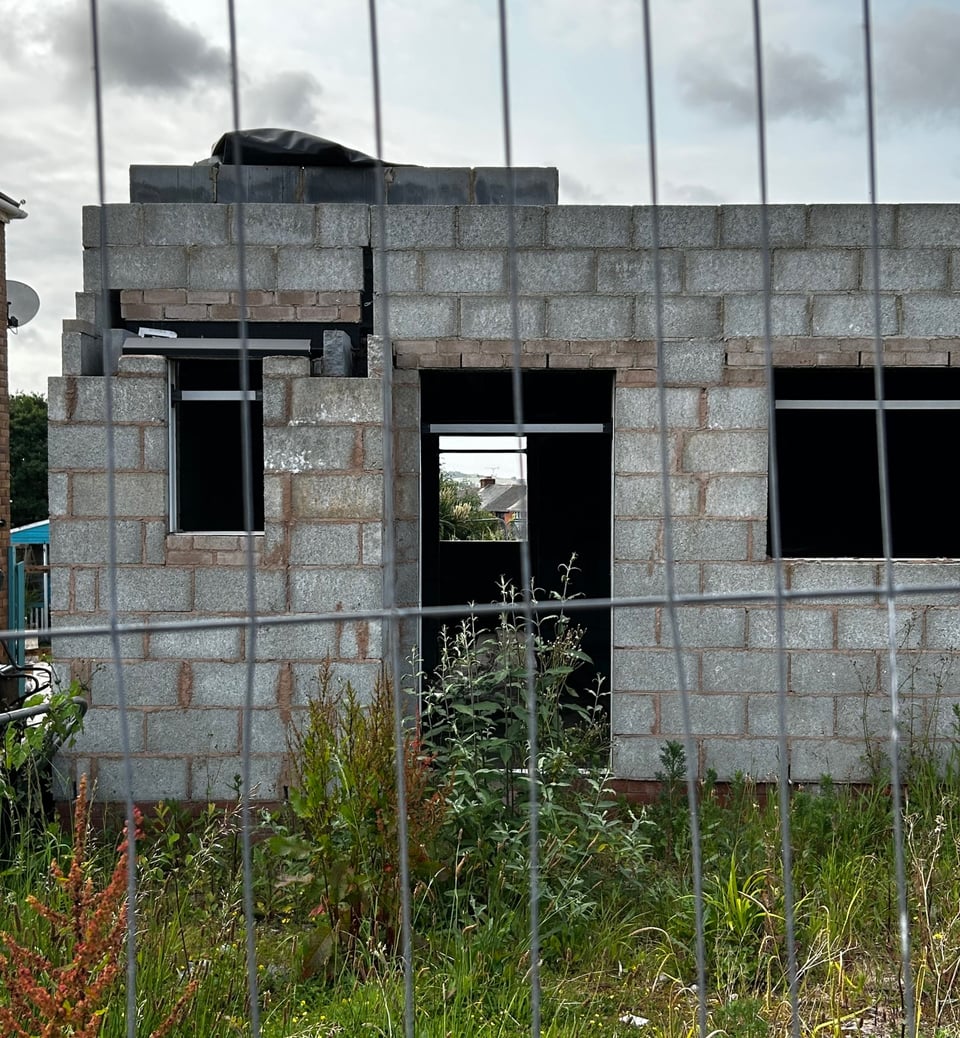Field Notes: Buddle Lane estate, Exeter (4 Jun 2025)
Sometimes, everyday twentieth century housing needs to be rebuilt. But delays modernising some 1920s Homes for Heroes has real life consequences. I look at the Buddle Lane estate in Exeter which really shouldn't have any Laing Easiform builds left.
This morning I popped up to the Buddle Lane estate to collect a GCSE History revision guide. Despite living by it for years, I still get have to keep my map open as some of the roads curve and bend. And then I remembered that this estate started life as part of the Homes for Heroes interwar council housing boom, and I thought I’d write a bit about it. This focusses more on the social value than the architectural value.
Buddle Lane estate’s Easiform housing
The 1930s Buddle Lane estate sits in St Thomas, a suburb of Exeter that was only made part of the city in 1900. In the days when the city’s walls were intact, St Thomas was where undesirables like actors would end up for night. Outside the walls and across the river, just to be on the safe side. I have to declare an interest here: I’ve lived in St Thomas since the 1990s and so am obviously biased towards its chaotic good vibe.
If you’ve ever taken the train west from Exeter then you’ll have gone through St Thomas. Or rather, over it. Brunel’s great railway viaduct cuts the suburb off from the rest of the city and the river. The first half mile is flat. This is old marshland, drained in the age of steam, and used to go underwater whenever the river burst its banks. Then the ground rises steeply up to a green ridgeway.

Buddle Lane itself lies along the start of this slope. When I moved to St Thomas I talked to people who remembered Buddle Lane as a Devon country lane when they were children. The lane curves and meanders its way north to south, firmly above the possible floodplain to the east. But as the city expanded in the early 1900s the dry ground of St Thomas was needed.
The Buddle Lane Estate was started as part of the Homes for Heroes building drive. Some 300 homes were planned, and 294 were built. You can read details of their planning and construction over on Municipal Dreams. John Boughton has covered all the interwar housing in Exeter there, and Julia Neville is doing work on the topic as part of the Devon History Society’s focus on Devon in the 1920s.1
Of the homes built on Buddle Lane, 154 were constructed using the Laing Easiform method. This replaced brick walls with reinforced concrete, creating houses faster and cheaper than with brick. The estate survived WW2 with relatively little damage although some bombs aiming for the city did get close. Only this weekend someone told me of another bombsite, long since filled, a minute’s walk from Buddle Lane.

It may have survived the blitz but the Easiform didn’t cope so well with the rest of the twentieth century. They leaked heat out, and rain in. By the 1980s, the Easiforms on the estate were marked as defective and in need of retrofitting. The council were selling off housing stock under right to buy, which included tenants buying their Laing Easiform houses.
The council began transferring their remaining stock to a Housing Association (HA) as they became vacant. The HA did the renovations and let to council tenants. Win/win.

Then, with 104 houses transferred and upgraded by 2012, things went awry (the Exeter Observer has a long write-up of this). The council took the rebuilding project back in their control. Thirteen years on and the council has seven 1930s Laing Easiforms left to upgrade.
Except they don’t.

What they have is two untouched Laing houses and five building plots where contractors had demolished the old properties and started to rebuild. The photo above, on Newman Road, shows how one house in a semi-detached pair had been upgraded, and the other one has been demolished.2
Two of the families relocated to enable the rebuilds still want to come back to their old homes on the estate. But below is the blockwork of one of the rebuilds. It’s not going to be habitable for a while.

In November 2024, the council agreed to prioritize finishing the Laing rebuilds over rebuilding social housing at Vaughan Road in Whipton. The housing at Vaughan Road was supposed to be ready so tenants from Rennes House could take up residence in them.
There’s no simple answer for the council here: both in St Thomas and Whipton there is a need for these homes. The most recent data has 226 families waiting for a standard 3 bed home on the council’s housing list. There were 38 families in temporary accommodation in the city this winter. Finishing the Laing rebuilds would give five families a home. Which may not be much, statistically, but means a lot to each of those families.
It’s summer in Devon: and it’s been a blazing spring. It’s the kind of weather when building sites are active, trying to do as much as feasible before the autumn brings the storms. This morning, well gone 8am, there was no-one working on the empty plots. And who knows if the work will be completed before any devolution plans reshape local government?
If you know of an event or news item you think I should know about, you can contact me on Bluesky.
I’m off back to digging around on a deep dive. I’d not planned to send a newsletter today, but then I saw the stagnation of the rebuilds and remembered the excellent deep dive by Municipal Dreams.
If you’re enjoying this newsletter, feel free to share it with others.
If someone has sent you this, you can subscribe below.
A free sub will get you the weekly field notes and notice that a deep dive has been published.
A paid sub (£3 a month) will unlock the deep dives early, plus occasional bonus content and the warm knowledge that you’re supporting the project.
See Julia Neville’s post on Municipal Dream here, and the Devon History Society website for details of some of their events this summer. ↩
Full details are listed in this Options report presented to Exeter City Council’s executive for a decision. ↩